
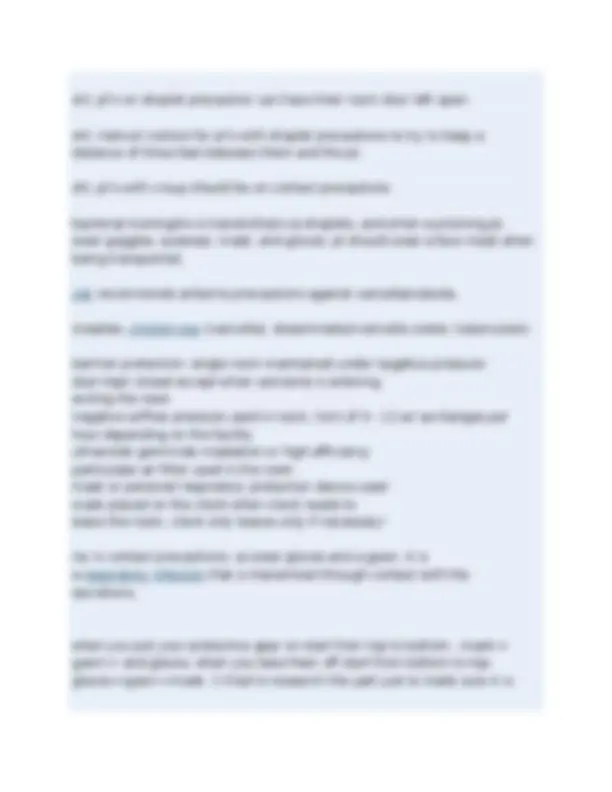
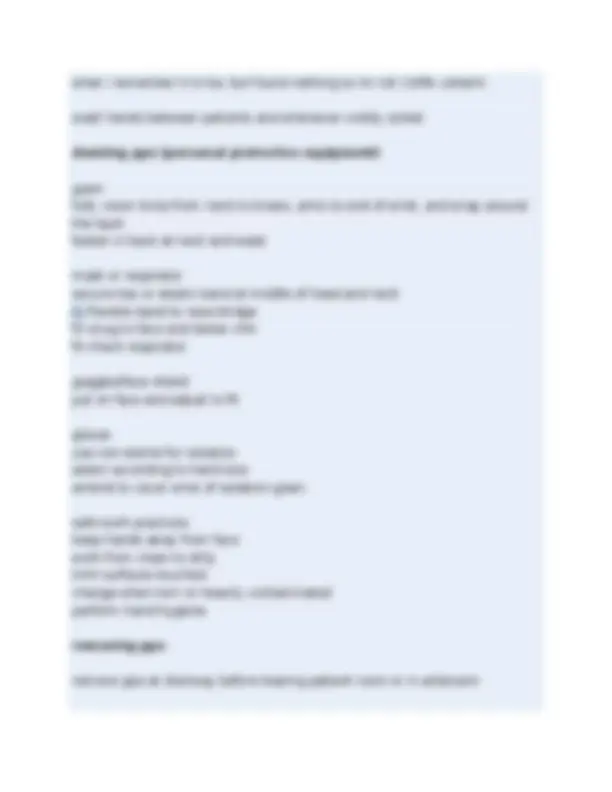
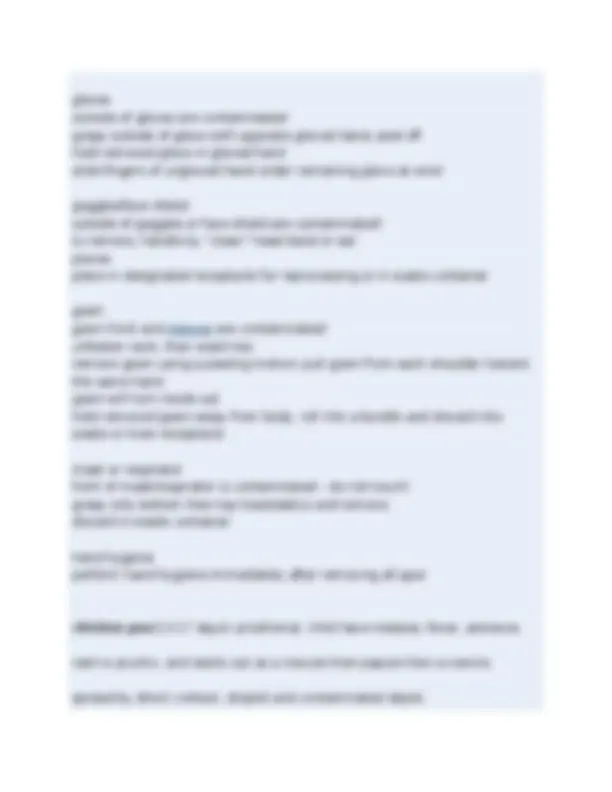
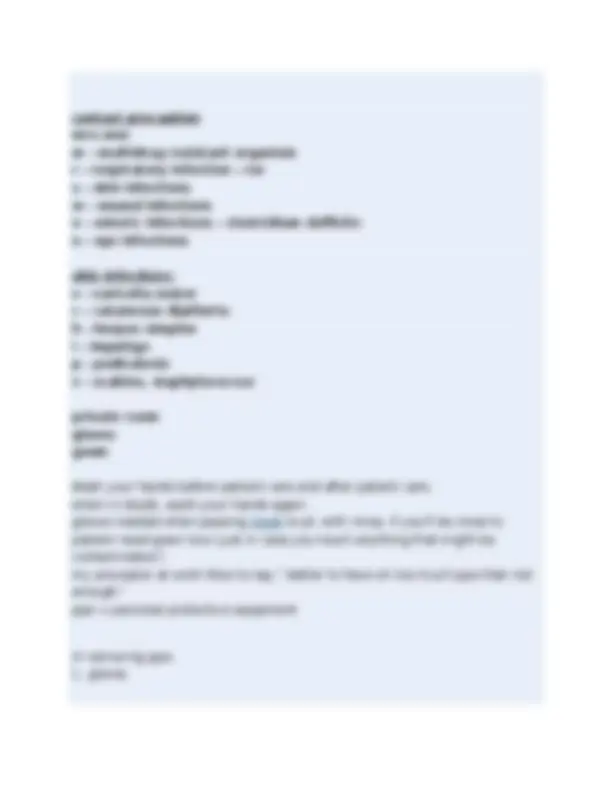
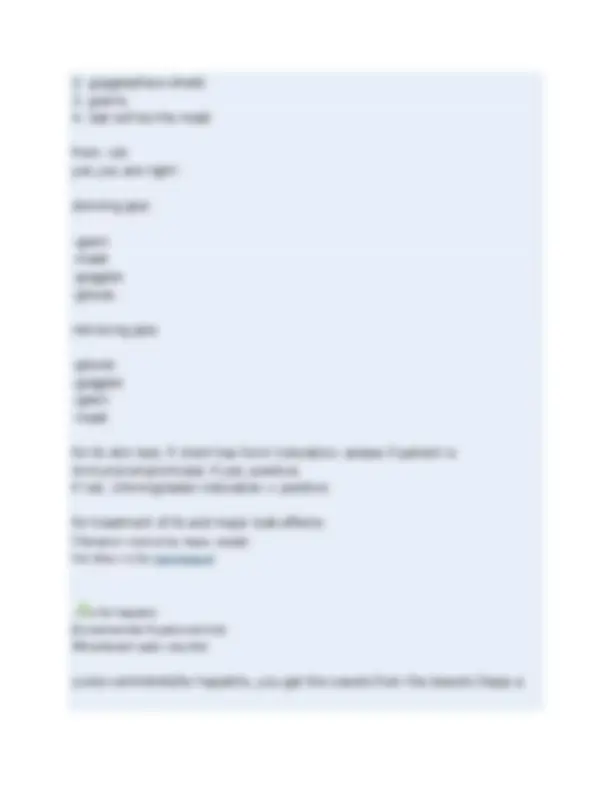
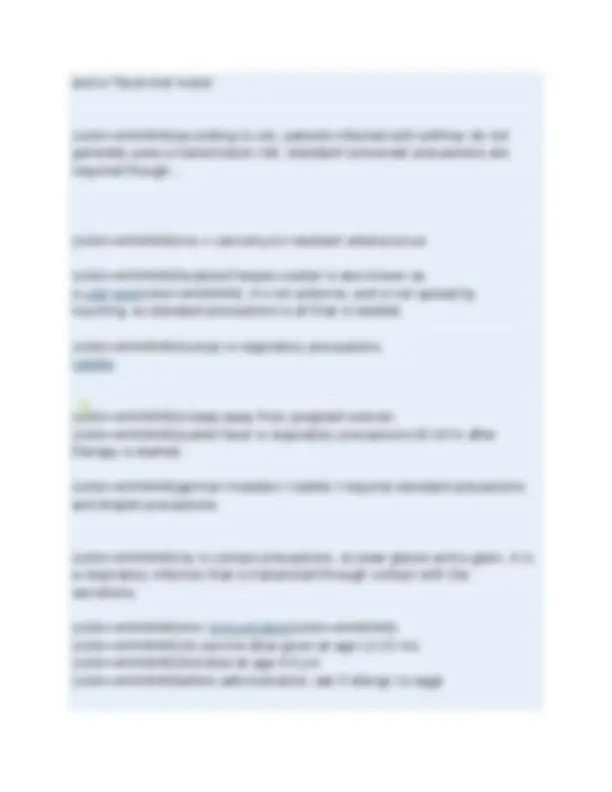
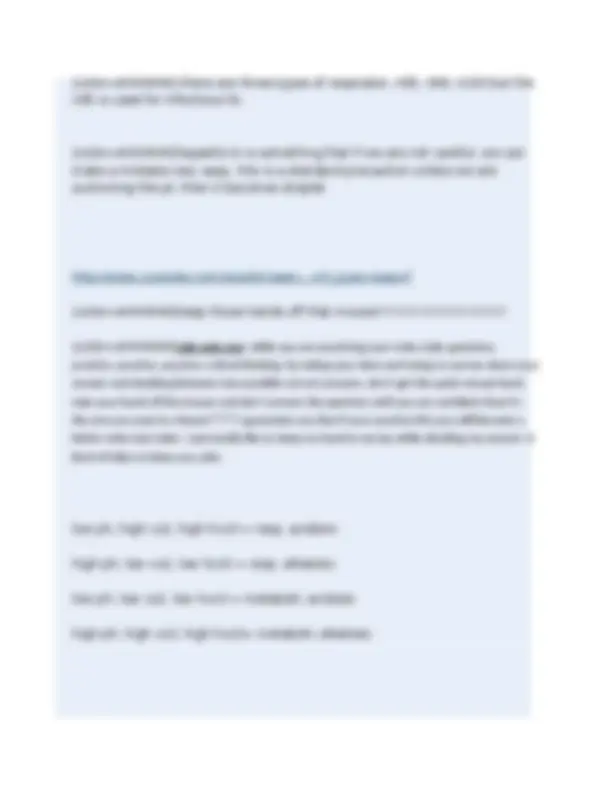
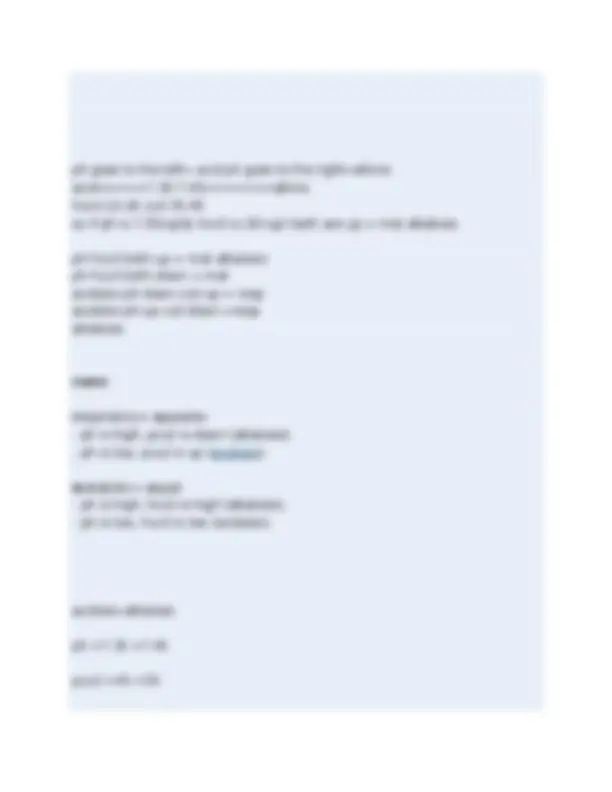
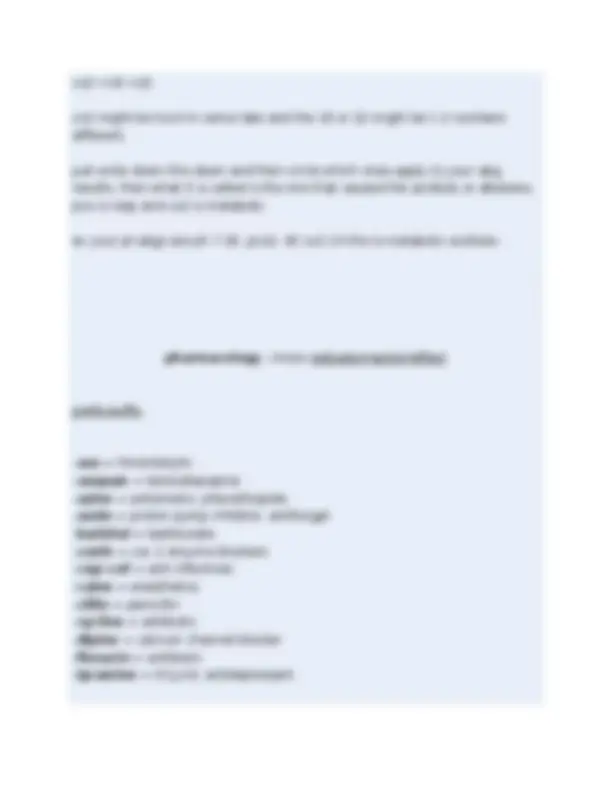
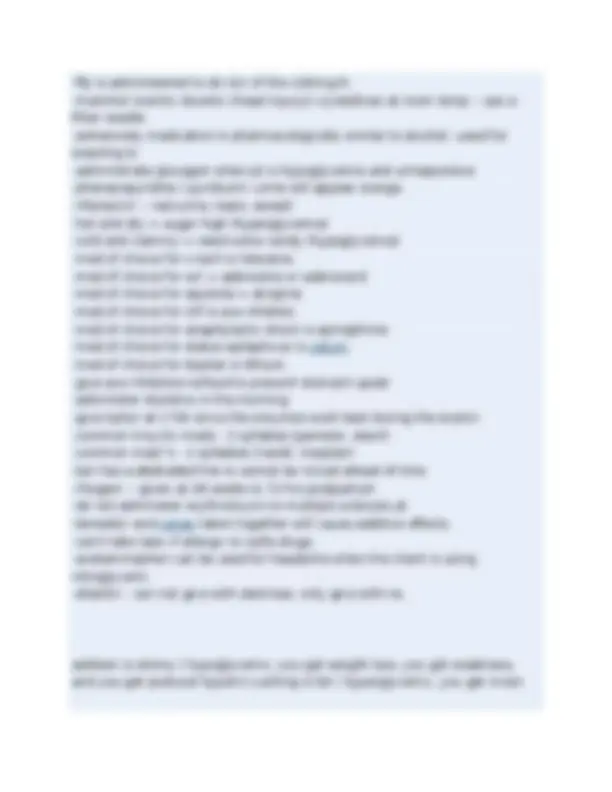
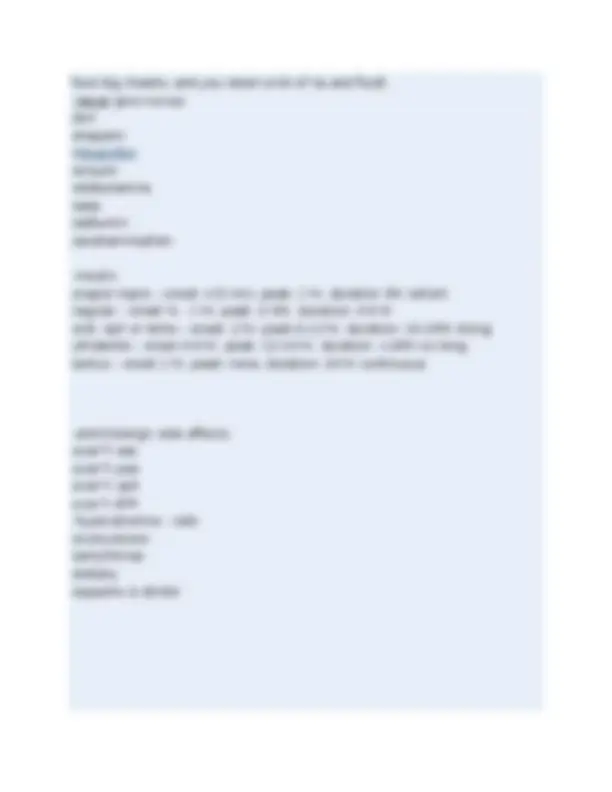
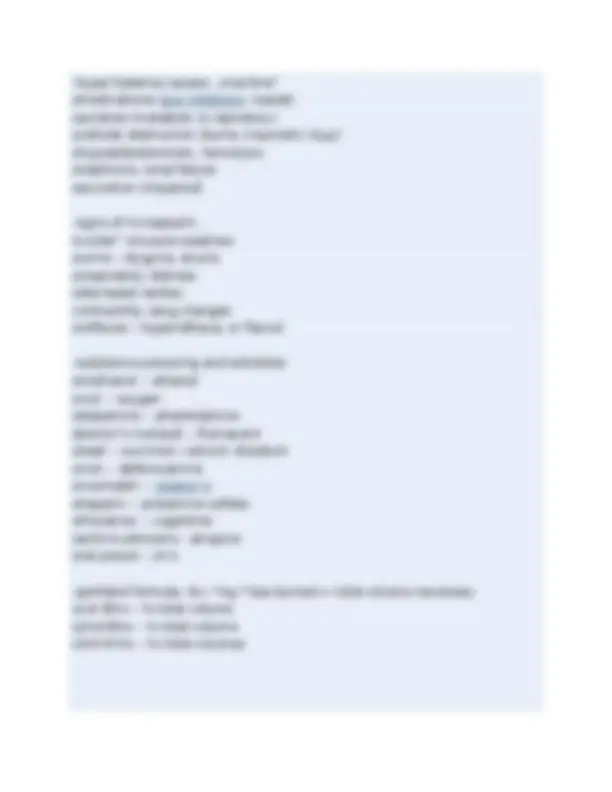
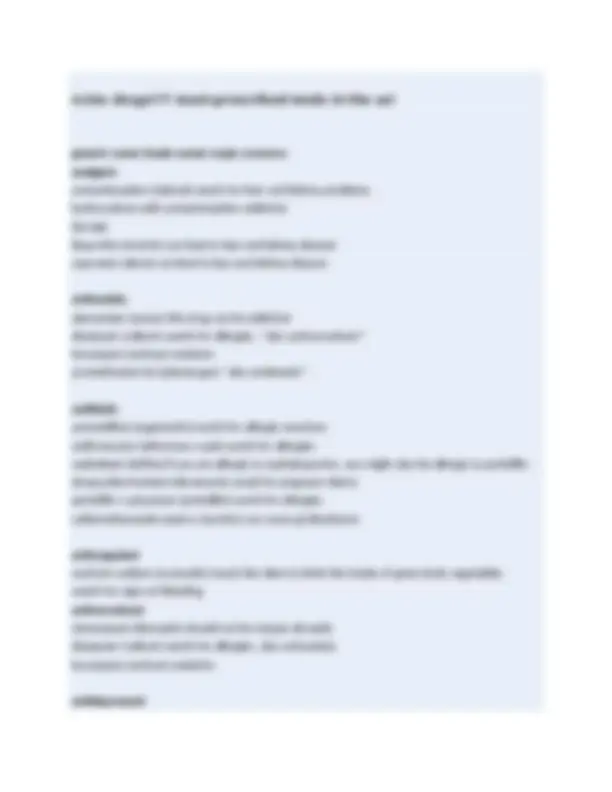
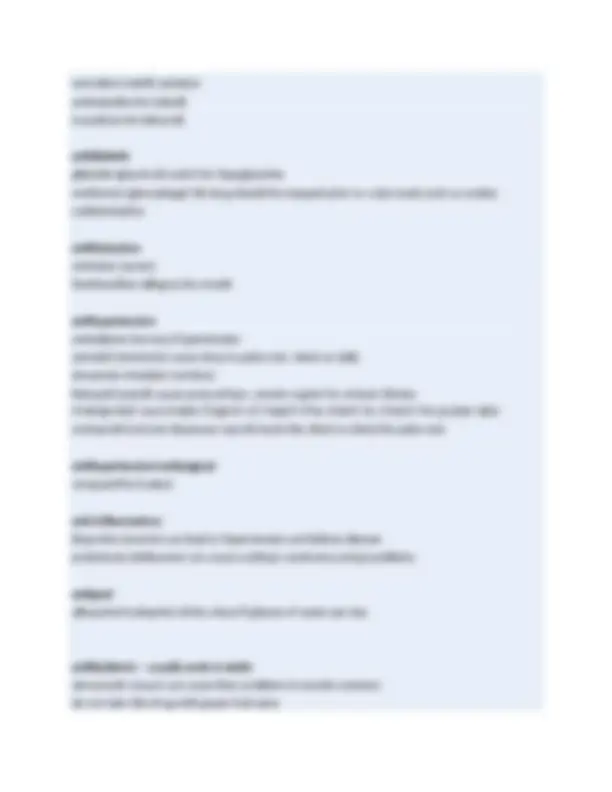
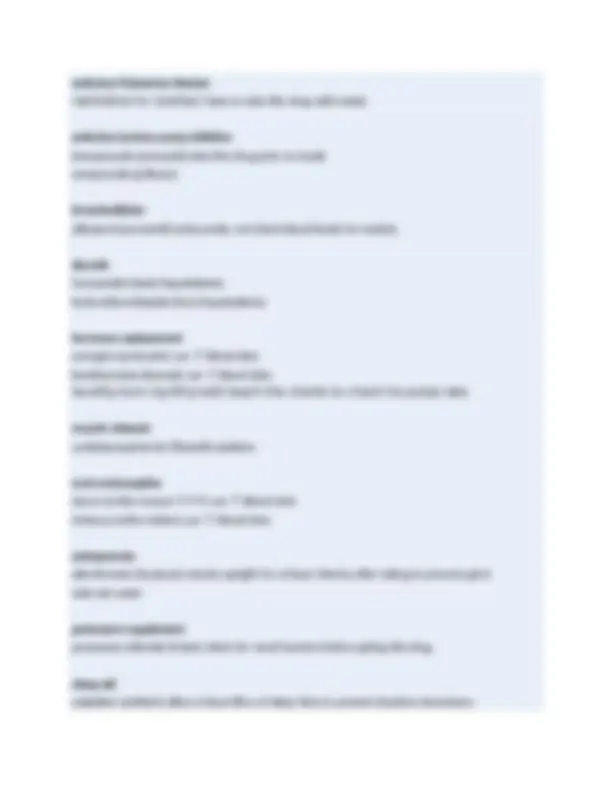

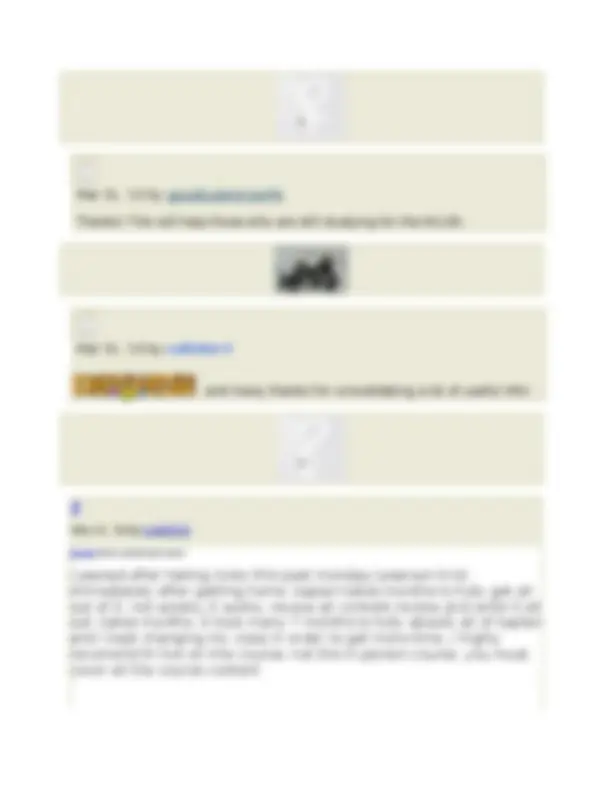
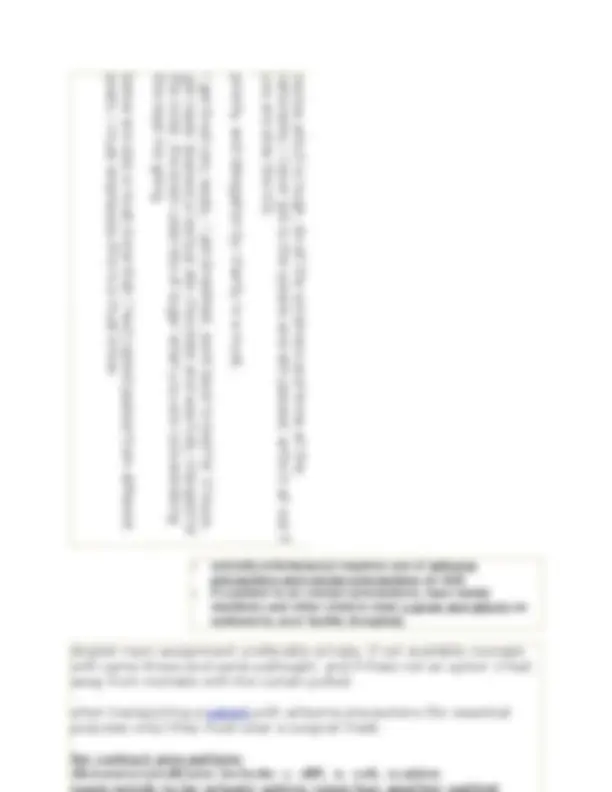
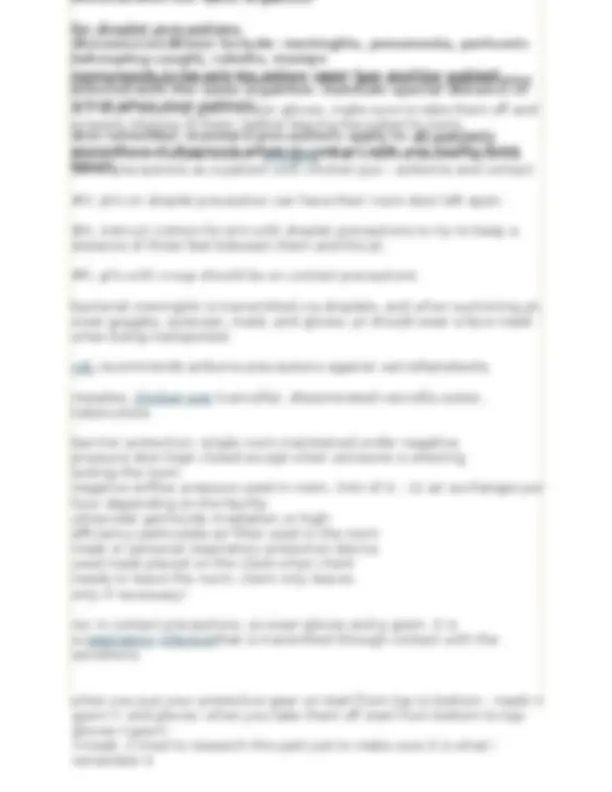
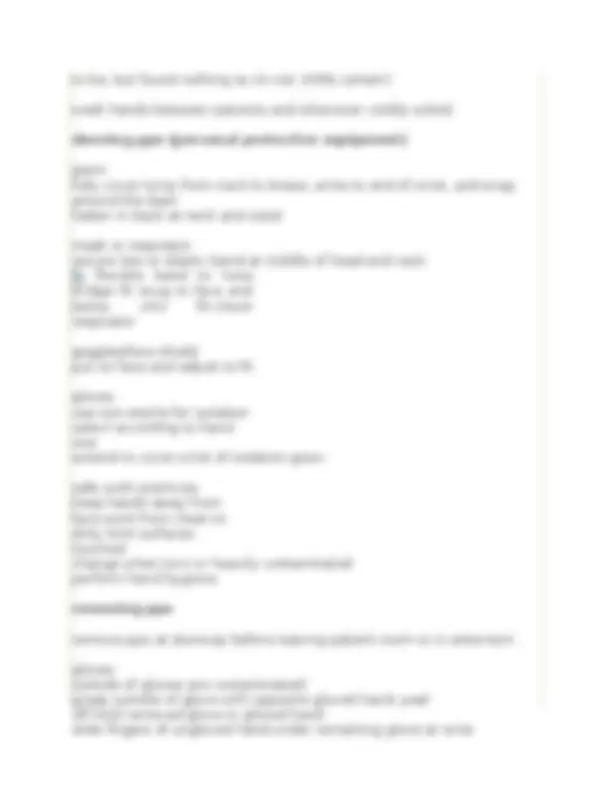
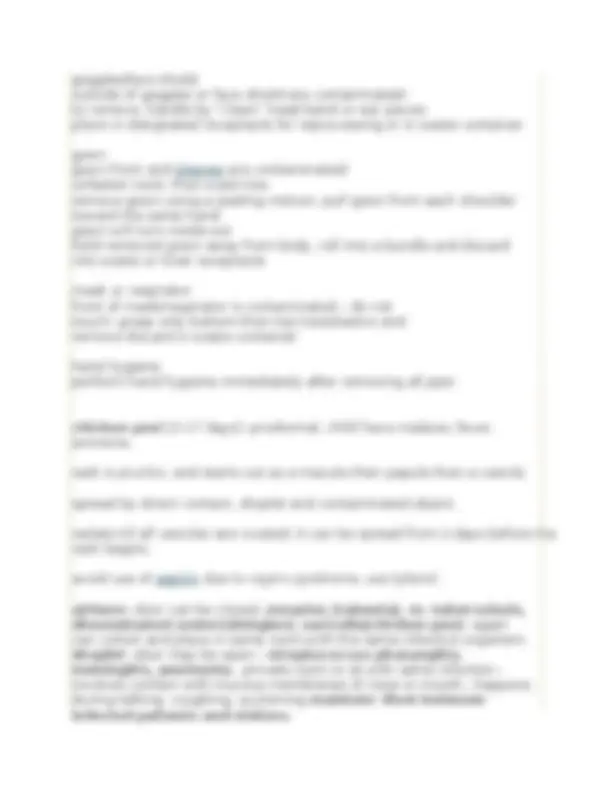


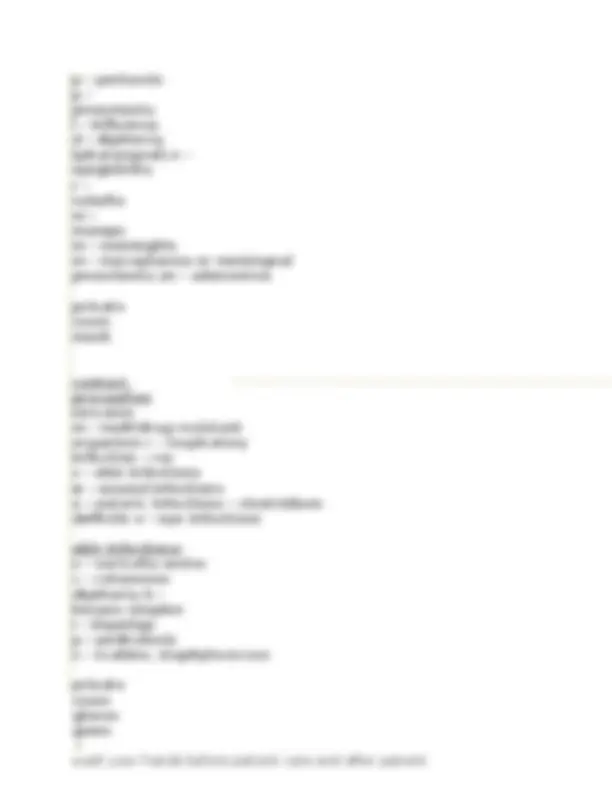

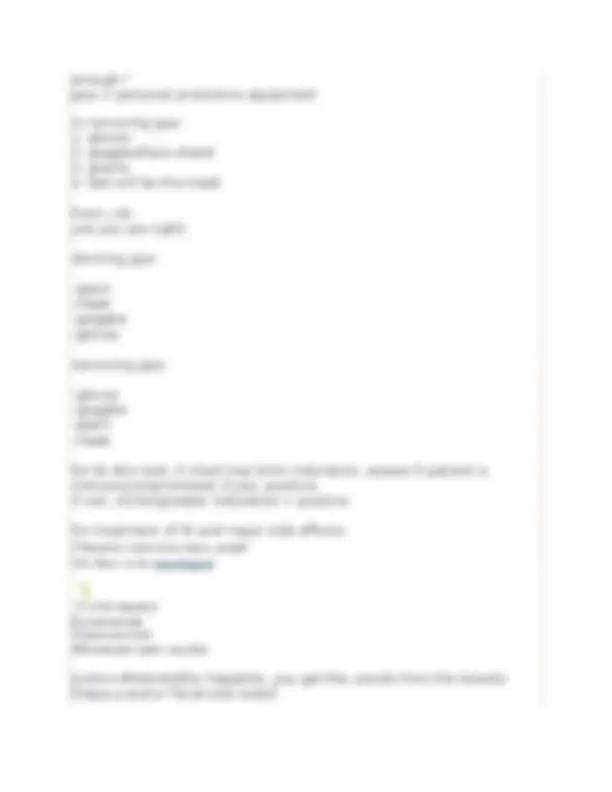
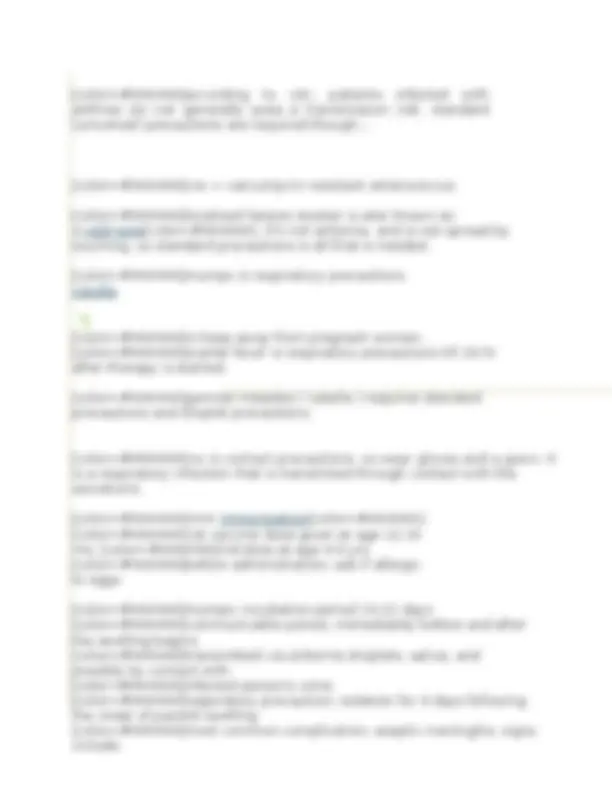
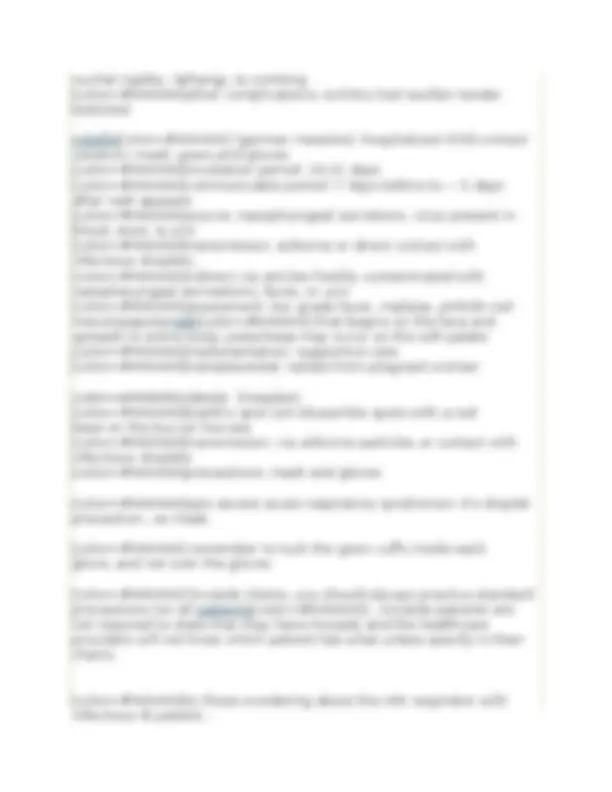
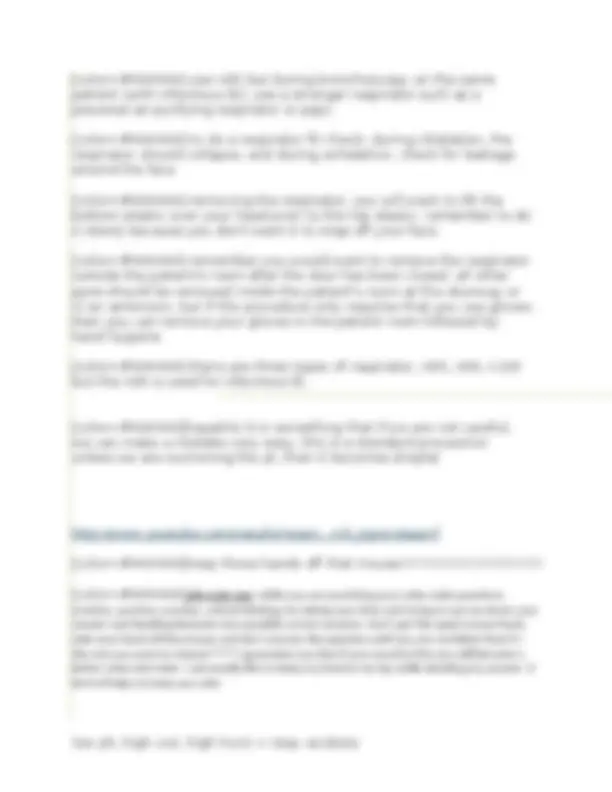
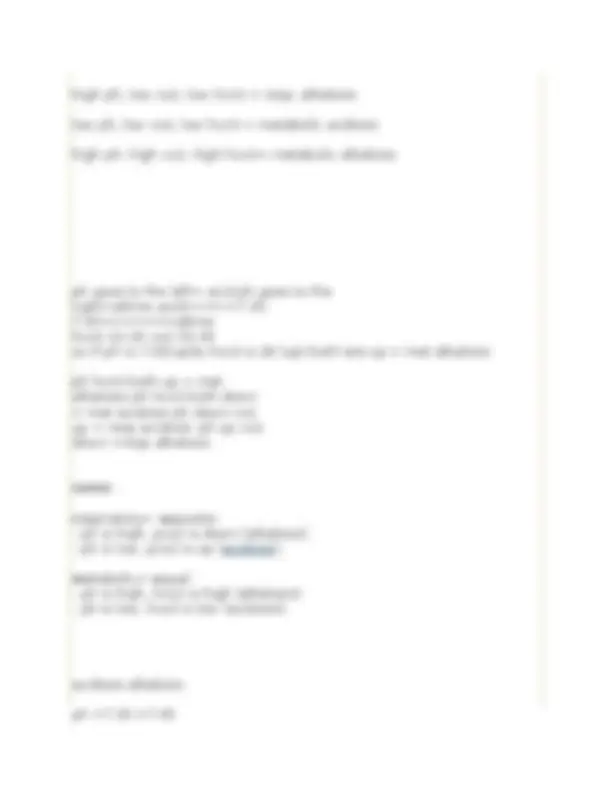
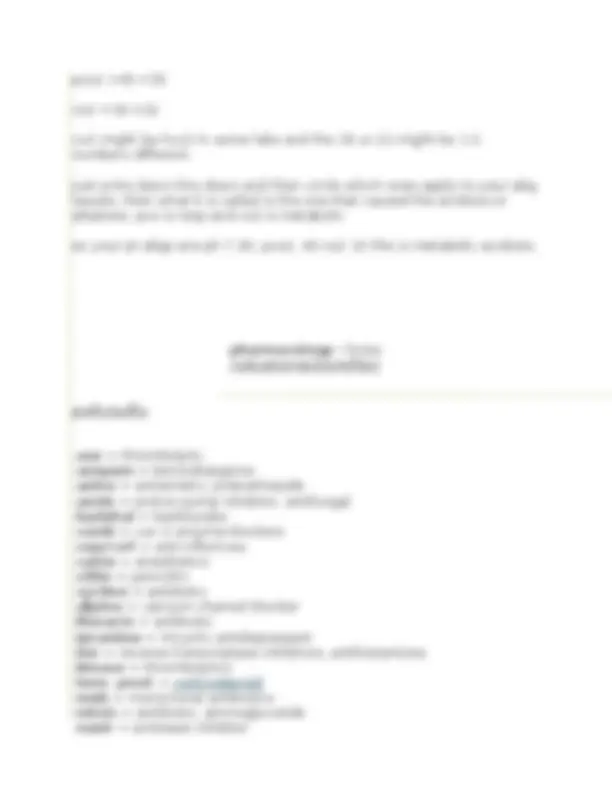
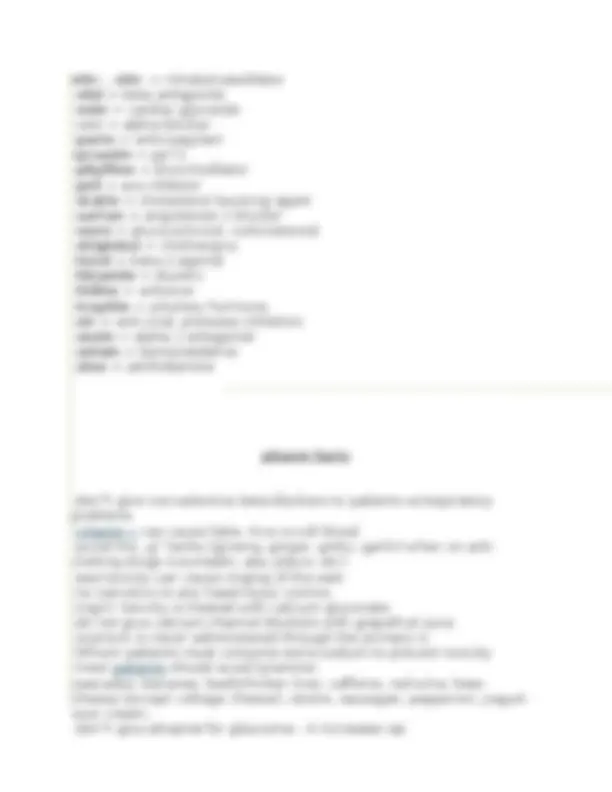
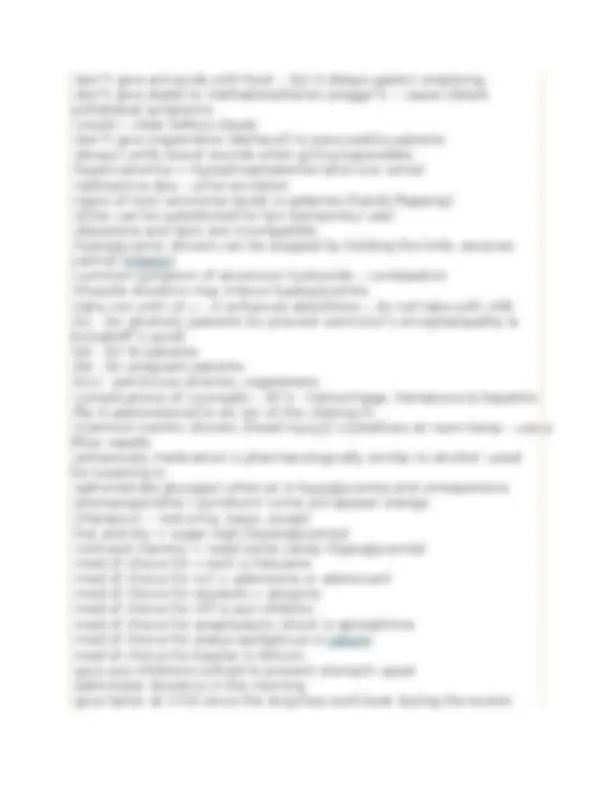
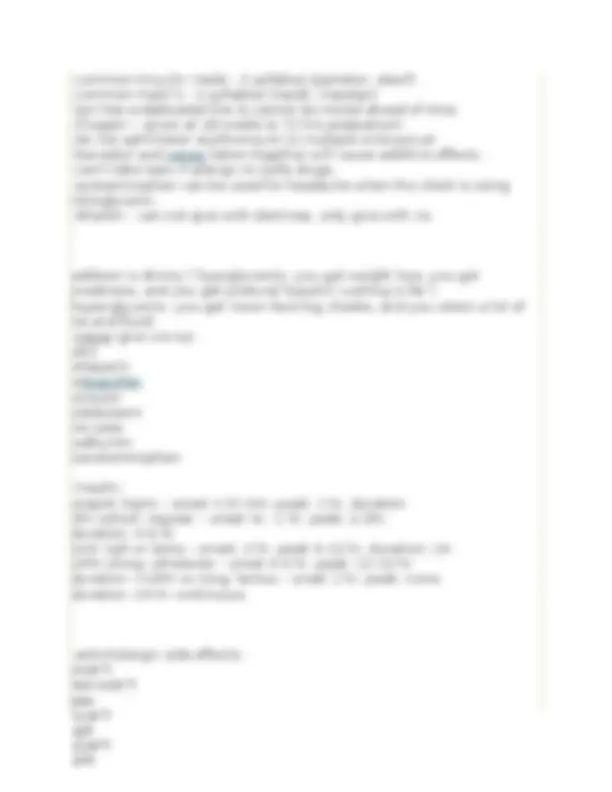

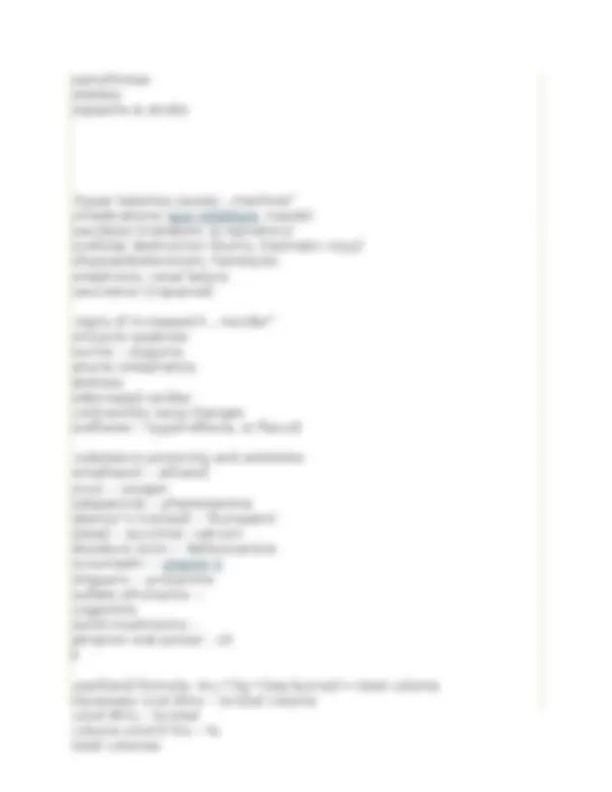

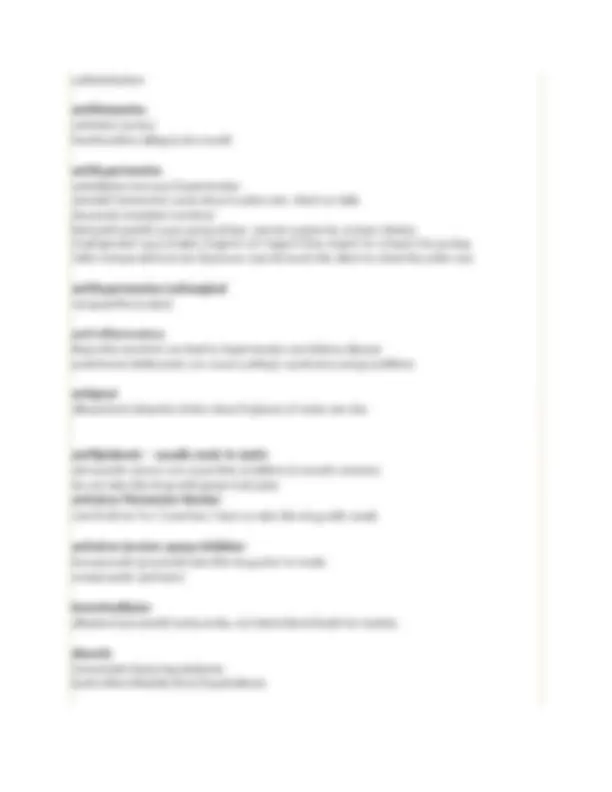
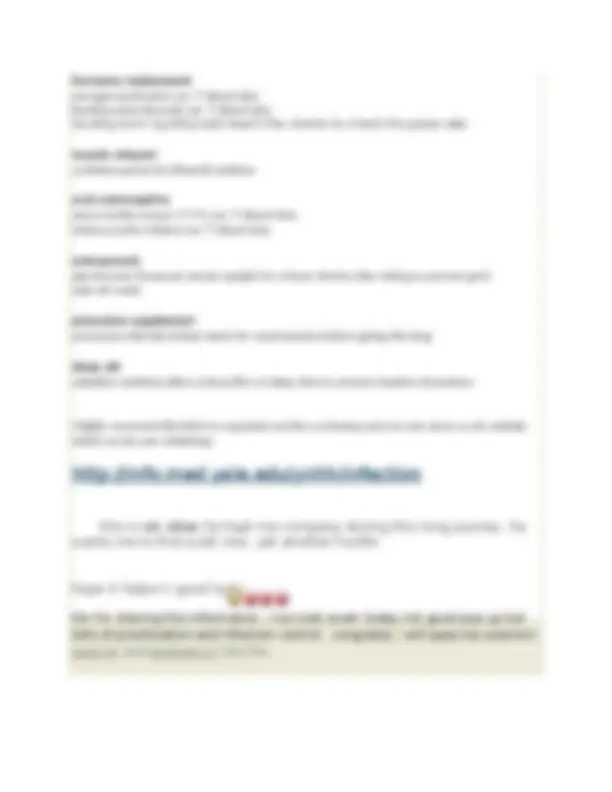
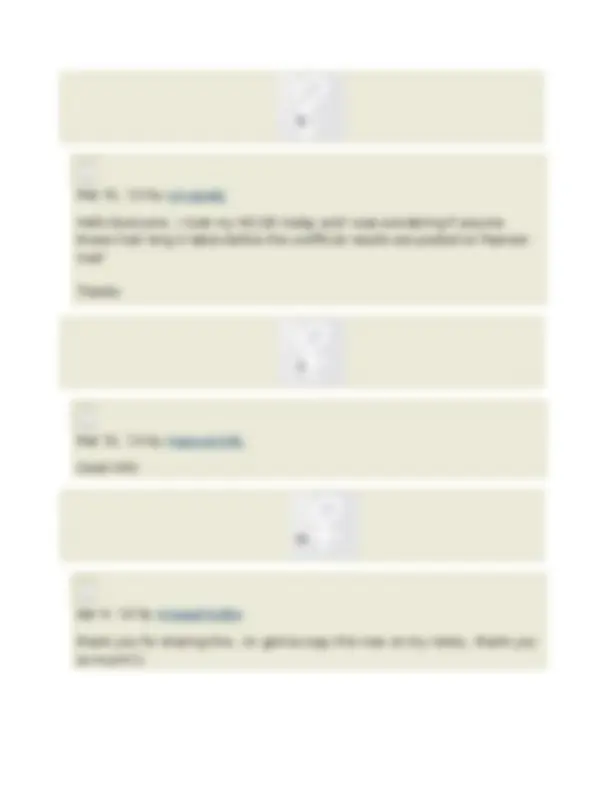
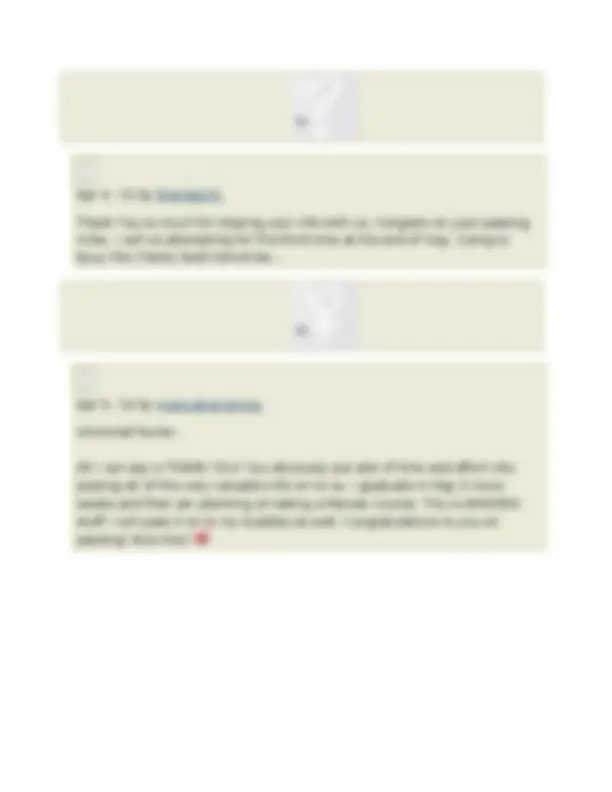


Study with the several resources on Docsity

Earn points by helping other students or get them with a premium plan


Prepare for your exams
Study with the several resources on Docsity

Earn points to download
Earn points by helping other students or get them with a premium plan
Community
Ask the community for help and clear up your study doubts
Discover the best universities in your country according to Docsity users
Free resources
Download our free guides on studying techniques, anxiety management strategies, and thesis advice from Docsity tutors
The NCLEX (National Council Licensure Examination) covers a wide range of subjects related to nursing practice, including but not limited to: Nursing Fundamentals: Basic nursing concepts such as patient hygiene, vital sign assessment, medication administration, and infection control. Medical-Surgical Nursing: Care of patients with various medical and surgical conditions, including cardiovascular disorders, respiratory diseases, gastrointestinal issues, endocrine disorders, and neurological conditions. Maternal and Child Health Nursing: Care of pregnant women, newborns, infants, children, and adolescents, including topics such as prenatal care, labor and delivery, postpartum care, newborn assessment, pediatric growth and development, and pediatric illnesses. Mental Health Nursing: Assessment and care of patients with mental health disorders, including mood disorders, anxiety disorders, psychotic disorders, personality disorders, substance use disorders, and therapeutic communication
Typology: Exams
1 / 49

This page cannot be seen from the preview
Don't miss anything!










































varicella (chickenpox) requires use of airborne precautions and contact precautions as well. if a patient is on contact precautions, have family members and other visitors wear a gown and gloves as outlined by your facility (hospital).
precautions as a patient with chicken pox---airborne and contact
what i remember it to be, but found nothing so im not 100% certain) wash hands between patients and whenever visibly soiled. donning ppe (personal protective equipment) gown fully cover torso from neck to knees, arms to end of wrist, and wrap around the back fasten in back at neck and waist mask or respirator secure ties or elastic band at middle of head and neck fit flexible band to nose bridge fit snug to face and below chin fit-check respirator goggles/face shield put on face and adjust to fit gloves use non-sterile for isolation select according to hand size extend to cover wrist of isolation gown safe work practices keep hands away from face work from clean to dirty limit surfaces touched change when torn or heavily contaminated perform hand hygiene removing ppe remove ppe at doorway before leaving patient room or in anteroom
gloves outside of gloves are contaminated! grasp outside of glove with opposite gloved hand; peel off hold removed glove in gloved hand slide fingers of ungloved hand under remaining glove at wrist goggles/face shield outside of goggles or face shield are contaminated! to remove, handle by “clean” head band or ear pieces place in designated receptacle for reprocessing or in waste container gown gown front and sleeves are contaminated! unfasten neck, then waist ties remove gown using a peeling motion; pull gown from each shoulder toward the same hand gown will turn inside out hold removed gown away from body, roll into a bundle and discard into waste or linen receptacle mask or respirator front of mask/respirator is contaminated – do not touch! grasp only bottom then top ties/elastics and remove discard in waste container hand hygiene perform hand hygiene immediately after removing all ppe! chicken pox (13-17 days)--prodromal, child have malaise, fever, anorexia. rash is pruritic, and starts out as a macule then papule then a vesicle. spread by direct contact, droplet and contaminated object.
c - contact airborne precaution (credit goes to the one who posted this on april thread, sorry can't remember your name) my - measles chicken - chickenpox hez - herpes zoster (disseminated) tb - tb private room negative pressure with 6-12 air exchanges per hour uv mask n95 mask for tb droplet precaution think of spiderman! s - sepsis s - scarlet fever s - streptococcal pharyngitis p - parvovirus b p - pertussis p - pneumonia i - influenza d - diptheria (pharyngeal) e - epiglottitis r - rubella m - mumps m - meningitis m - mycoplasma or meningeal pneumonia an - adenovirus private room mask
contact precaution mrs.wee m - multidrug resistant organism r - respiratory infection - rsv s - skin infections w - wound infections e - enteric infections - clostridium defficile e - eye infections skin infections: v - varicella zoster c - cutaneous diptheria h - herpes simplex i - impetigo p - pediculosis s - scabies, staphylococcus private room gloves gown wash your hands before patient care and after patient care. when in doubt, wash your hands again. gloves needed when passing meds to pt. with mrsa, if you'll be close to patient need gown too.( just in case you touch anything that might be contaminated ) my preceptor at work likes to say," better to have on too much ppe than not enough." ppe = personal protective equipment in removing ppe:
and e-"fecal-oral route) [color=#444444]according to cdc, patients infected with anthrax do not generally pose a transmission risk. standard (universal) precautions are required though... [color=#444444]vre = vancomycin resistant enterococcus [color=#444444]localized herpes zooster is also known as a cold sore[color=#444444]. it's not airborne, and is not spread by touching, so standard precautions is all that is needed. [color=#444444]mumps is respiratory precautions. rubella [color=#444444]is keep away from pregnant women. [color=#444444]scarlet fever is respiratory precautions till 24 hr after therapy is started. [color=#444444]german measles ( rubella ) requires standard precautions and droplet precautions. [color=#444444]rsv is contact precautions. so wear gloves and a gown. it is a respiratory infection that is transmited through contact with the secretions. [color=#444444]mmr immunization[color=#444444]: [color=#444444]1st vaccine dose given at age 12-15 mo. [color=#444444]2nd dose at age 4-6 yrs [color=#444444]before administration; ask if allergic to eggs
[color=#444444]mumps: incubation period 14-21 days [color=#444444]communicable period, immediately before and after the swelling begins [color=#444444]transmitted via airborne droplets, saliva, and possibly by contact with [color=#444444]infected person's urine [color=#444444]respiratory precaution; isolation for 9 days following the onset of parotid swelling [color=#444444]most common complication; aseptic meningitis, signs include- nuchal rigidity, lathargy, & vomiting [color=#444444]other complications; orchitis (red swollen tender testicles) rubella[color=#444444] (german measles): hospitalized child-contact isolation; mask, gown,and gloves [color=#444444]incubation period: 14-21 days [color=#444444]communicable period: 7 days before to ~ 5 days after rash appears [color=#444444]source: nasophryngeal secretions, virus present in blood, stool, & urin [color=#444444]transmission: airborne or direct contact with infectious droplets, [color=#444444]indirect via articles freshly contaminated with nasopharyngeal secreations, feces, or urin [color=#444444]assessment: low grade fever, malaise, pinkish-red maculopapularrash[color=#444444] that begins on the face and spreads to entire body, petecheae may occur on the soft palate [color=#444444]implementation: supportive care [color=#444444]transplacental: isolate from pregnant women [color=#444444]rubeola (measles) [color=#444444]koplik's spot (sm blue/white spots with a red base on the buccal mucosa [color=#444444]transmission: via airborne particles or contact with infectious droplets
[color=#444444]-there are three types of respirator, n95, n99, n100 but the n95 is used for infectious tb. [color=#444444]hepatitis b is something that if we are not careful, we can make a mistake very easy, this is a standard precaution unless we are suctioning the pt, then it becomes droplet http://www.youtube.com/results?searc...rch_type=&aq=f [color=#444444]keep those hands off that mouse!!!!!!!!!!!!!!!!!!!!!!!!!!!! [color=#444444] side note one : while you are practicing your nclex style questions, practice, practice, practice, critical thinking, by taking your time and trying to narrow down your answer and deciding between two possible correct answers. don’t get the quick mouse hand, take your hand off the mouse and don’t answer the question until you are confident that it’s the one you want to choose!!!!!!! i guarantee you that if your practice this you will become a better nclex test-taker. i personally like to keep my hand in my lap while deciding my answer. it kind of helps to keep you calm. low ph, high co2, high hco3 = resp. acidosis high ph, low co2, low hco3 = resp. alkalosis low ph, low co2, low hco3 = metabolic acidosis high ph, high co2, high hco3= metabolic alkalosis
ph goes to the left= acid ph goes to the right=alkine acid<<<<<7.35-7.45>>>>>>>alkine hco3 22-26 co2 35- 45 so if ph is 7.55(up)& hco3 is 28 (up) both are up = met alkalosis ph hco3 both up = met alkalosis ph hco3 both down = met acidosis ph down co2 up = resp acidosis ph up co2 down =resp alkalosis rome : r espiratory= o pposite: · ph is high, pco2 is down (alkalosis). · ph is low, pco2 is up (acidosis). m etabolic= e qual: · ph is high, hco3 is high (alkalosis). · ph is low, hco3 is low (acidosis). acidosis alkalosis ph <7.35 >7. pco2 >45 <
·vitamin c can cause false +ive occult blood ·avoid the „g‟ herbs (ginsing, ginger, ginko, garlic) when on anti-clotting drugs (coumadin, asa, plavix, etc) ·asa toxicity can cause ringing of the ears ·no narcotics to any head-injury victims ·mg2+ toxicity is treated with calcium gluconate ·do not give calcium-channel blockers with grapefruit juice ·oxytocin is never administered through the primary iv ·lithium patients must consume extra sodium to prevent toxicity ·maoi patients should avoid tyramine: oaacados, bananas, beef/chicken liver, caffeine, red wine, beer, cheese (except cottage cheese), raisins, sausages, pepperoni, yogurt, sour cream. ·don‟t give atropine for glaucoma – it increases iop ·don‟t give ant-acids with food -- b/c it delays gastric emptying. ·don‟t give stadol to methadone/heroin preggo‟s -- cause instant withdrawal symptoms ·insulin – clear before cloudy ·don‟t give meperidine (demerol) to pancreatitis patients ·always verify bowel sounds when giving kayexelate ·hypercalcemia = hypophosphatemia (and vice versa) ·radioactive dye – urine excretion ·signs of toxic ammonia levels is asterixis (hands flapping) ·d10w can be substituted for tpn (temporary use) ·dopamine and lasix are incompatible ·hypoglycemic shivers can be stopped by holding the limb, seizures cannot (infants) ·common symptom of aluminum hydroxide – constipation ·thiazide diuretics may induce hyperglycemia ·take iron with vit c – it enhances absorbtion – do not take with milk ·b1 - for alcoholic patients (to prevent wernicke‟s encephalopathy & korsakoff‟s synd) ·b6 - for tb patients ·b9 - for pregnant patients ·b12 - pernicious anemia, vegetarians. ·complications of coumadin - 3h‟s - hemorrhage, hematuria & hepatitis
face big cheeks, and you retain a lot of na and fluid) ·never give via ivp: okcl oheparin oibuprofen oinsulin odobutamine oasa oalbumin oacetaminophen ·insulin: orapid: lispro – onset <15 min. peak: 1 hr. duration 3hr oshort: regular – onset ½ - 1 hr. peak: 2-3hr. duration: 4-6 hr oint: nph or lente – onset: 2 hr. peak 6-12 hr. duration: 16-24hr olong: ultralente – onset 4-6 hr. peak: 12-16 hr. duration: >24hr ov.long: lantus – onset 1 hr. peak: none. duration: 24 hr continuous ·anticholergic side effects: ocan‟t see ocan‟t pee ocan‟t spit ocan‟t sh*t ·hypocalcemia – cats oconvulsions oarrythmias otetany ospasms & stridor
·hyper kalemia causes: „machine‟ omedicationa (ace inhibitors, nsaids) oacidosis (metabolic & repiratory) ocellular destruction (burns, traumatic injuy) ohypoaldosteronism, hemolysis onephrons, renal failure oexcretion (impaired) ·signs of increased k „ murder‟ omuscle weaknes ourine – olyguria, anuria orespiratory distress odecreaed cardiac contractility oecg changes oreflexes – hyperreflexia, or flaccid ·substance poisoning and antidotes omethanol -- ethanol oco2 -- oxygen odopamine -- phentolamine obenzo‟s (versed) -- flumazenil olead -- succimer, calcium disodium oiron -- deferoxamine ocoumadin -- vitamin k oheparin -- protamine sulfate othorazine -- cogentine owild mushrooms - atropine orat poison - vit k ·parkland formula: 4cc * kg * bsa burned = total volume necessary o1st 8hrs – ½ total volume o2nd 8hrs – ¼ total volume o3rd 8 hrs – ¼ total volumes